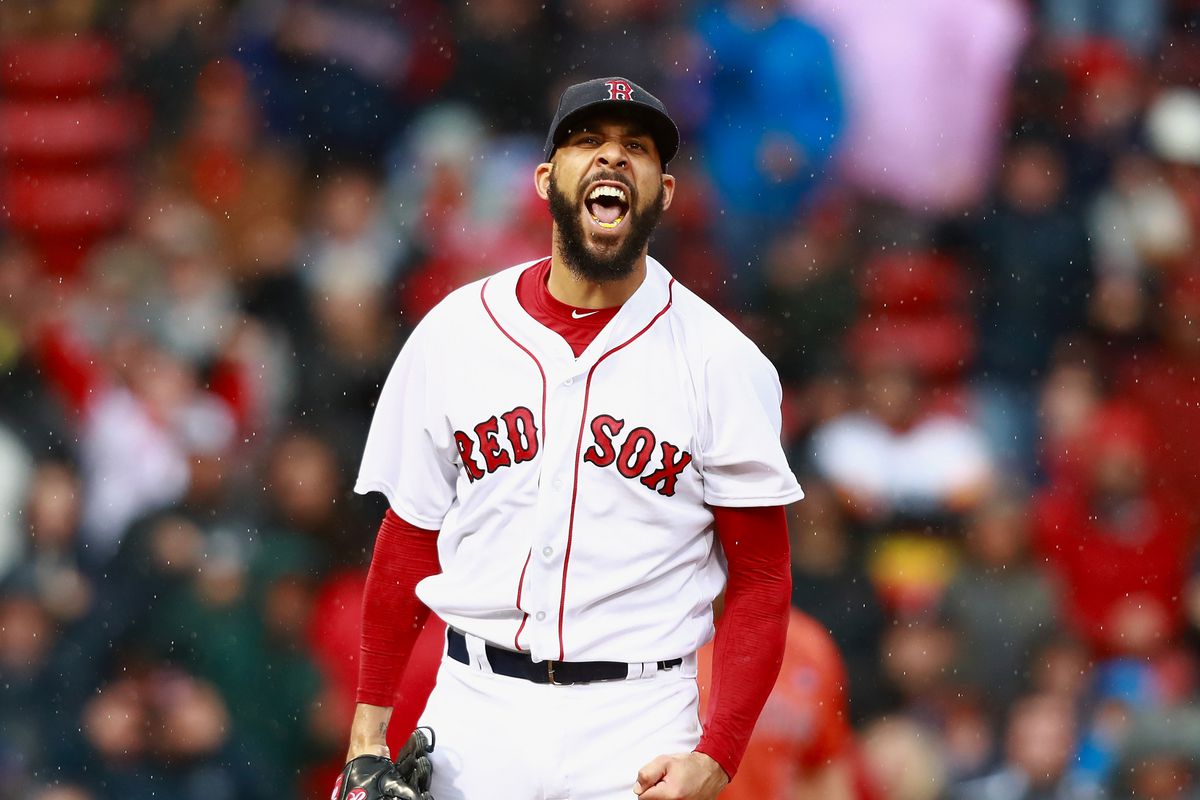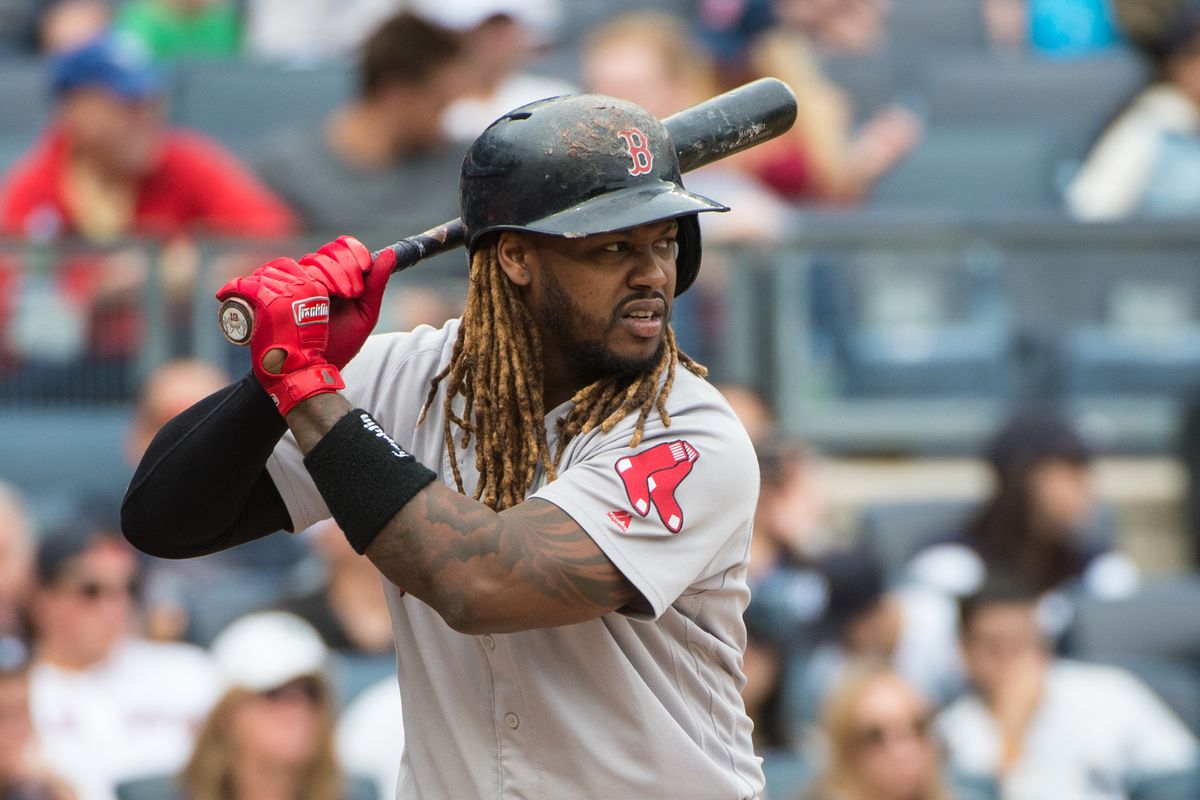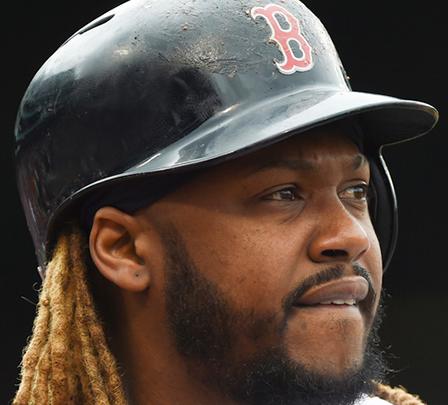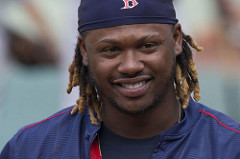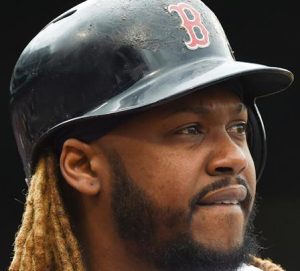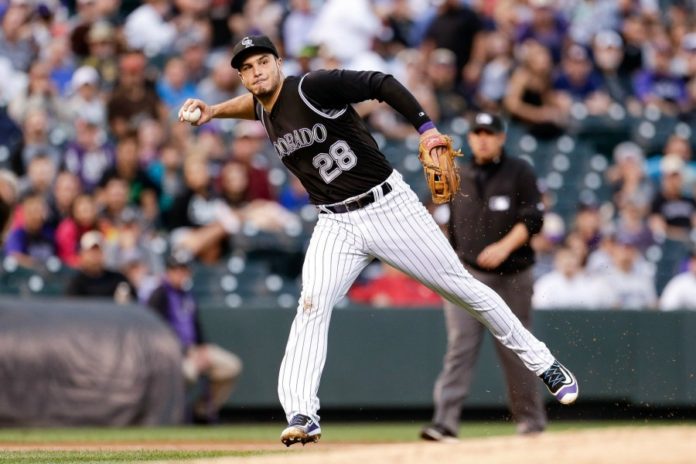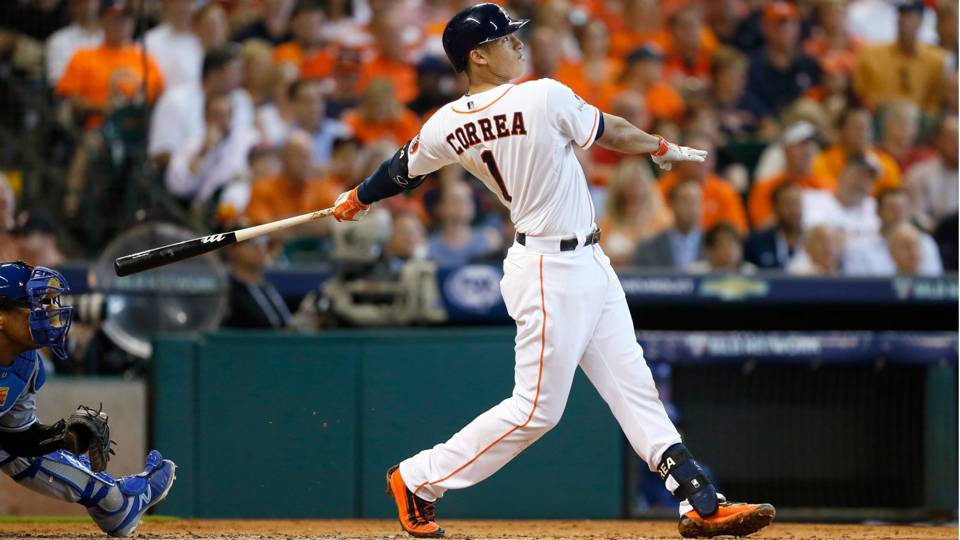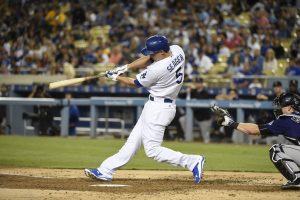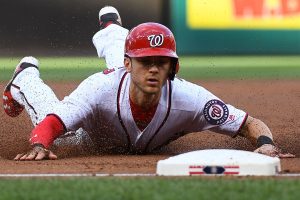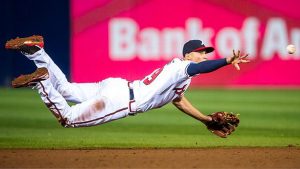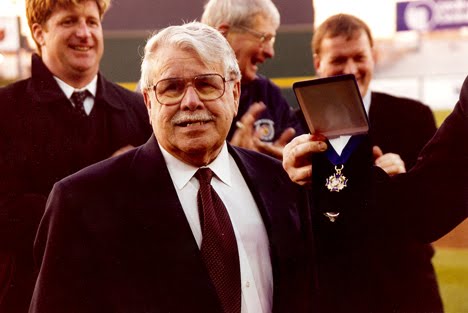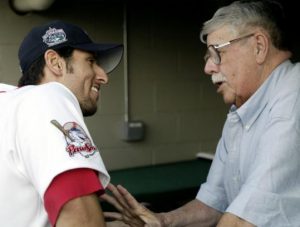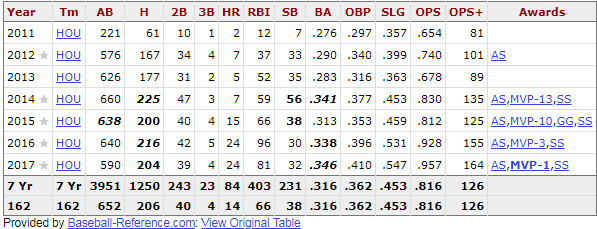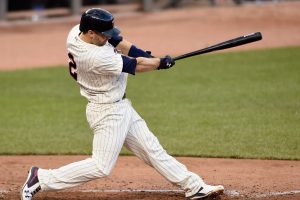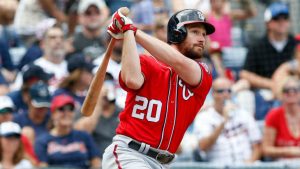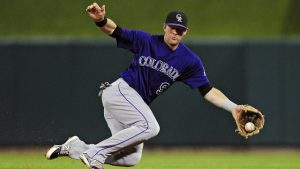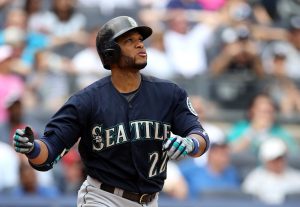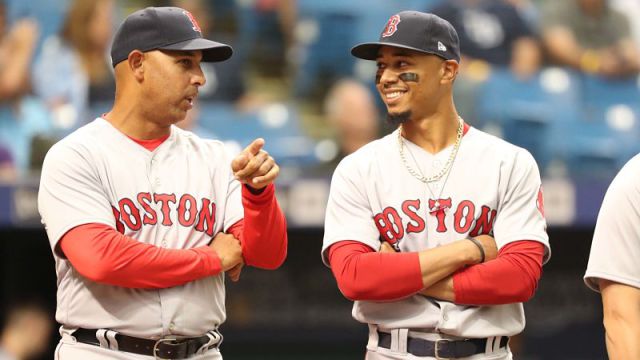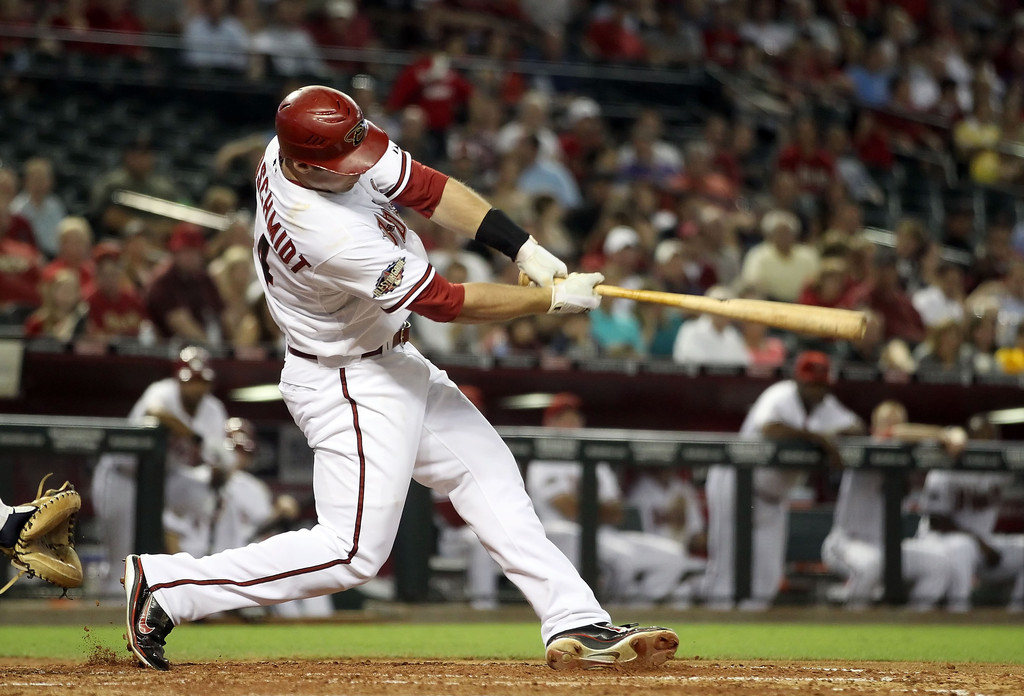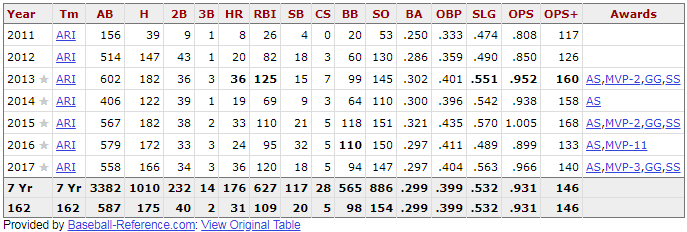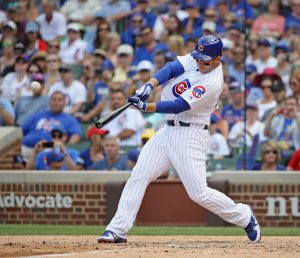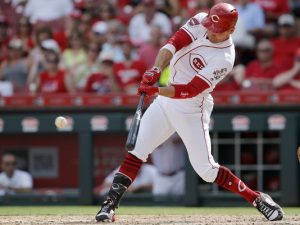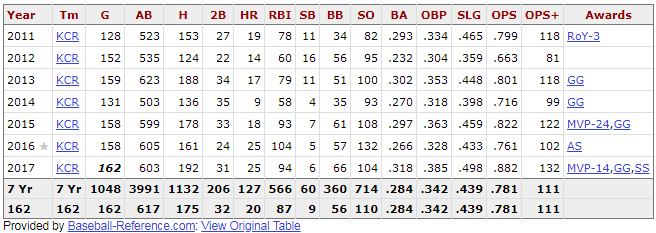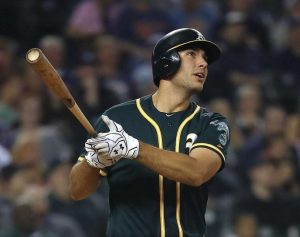There is a lot of talent at the hot corner. In fact, Mike Moustakas hit 38 home runs last season and isn’t even on a team as of this writing. He hit more home runs than any other third baseman last season. Yet, it’s debatable whether or not he is a top 10 third baseman moving forward. Weighing offense, defense, base running and age, these are my top 10 for the long haul.
1. Nolan Arenado
Arenado has arguably been a top five player in all of baseball three years running. Arenado led the league in both home runs and runs batted in during the 2015 and 2016 seasons. Last season he led the league in doubles while hitting a career high .309. During that three year stretch, his average season has been .297 with 40 home runs, 40 doubles, 131 RBI and a .353/.577/.930 slash line. He might be the best current player to have not won an MVP Award.
Arenado does benefit by playing half his games at high altitude, but he’d be a superstar regardless. Most players hit better at home regardless, so whereas he does receive added benefit at Coors, you can’t completely write off his elevated numbers at home. Arenado has still hit 56 homers on the road over the past three seasons, compared to his 64 at Coors. That is not much of a difference. The biggest gap is at batting average, where comfortability in a home park plays a big role. It will be interesting to watch what happens if he leaves Colorado in a couple of years, but I don’t think the drop off will be steep.
What secures Arenado in the top spot for me is his excellent defense in addition to the hitting. Arenado has won the Gold Glove all five seasons he has played in. His dWAR has been 1.9 or better in each season and he has averaged over 20 defensive runs saved per season. Among third basemen, he has led the league in range factor per game in every season.
2. Kris Bryant
Bryant just might be the most dangerous amongst all third basemen with a bat in his hands. He won Rookie of the Year and the MVP in his first two seasons. The belief is that he dropped off a bit from his MVP season last year, but that’s not as true as one might think. His home runs fell off from 39 to 29, and his runs batted in fell way off. However, if you look more closely, his other stats are very similar. His batting average was nearly identical, and he got on base at a much higher clip. His slugging percentage, even with the dip in home runs, was not much lower. This led to Bryant actually improving his .939 OPS in 2016 to .946 last year.
Bryant is always going to hit a lot of home runs. One big key for him is his declining strike out rate. Bryant is dangerous when he gets wood on the ball, so the fact he has struck out less in each season is huge. Bryant led the league with 199 strike outs his rookie season. He cut 45 strike outs off that total in his MVP season, and lowered it all the way down to 128 last year. Hand-in-hand with that, he struck out in less than 20% of his at-bats last season, down from 30.6% in his rookie season. He also walked a career high 95 times last year. With his ability to put the ball in play more often, I would be surprised if Bryant didn’t bounce back to 35 home runs this season.
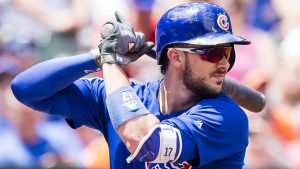
Kris Bryant of the Chicago Cubs hits against the Baltimore Orioles in the first inning during a game on July 16, 2017 in Baltimore, Maryland. (Photo by Patrick McDermott)
3. Jose Ramirez
Jose Ramirez’ star has skyrocketed the last two seasons. A lightly heralded young utility player heading into 2016, Ramirez batted .312 and hit 46 doubles that year. Last year he launched his game into a new stratosphere, hitting 29 homers and leading the league with 56 doubles. His .957 OPS was .002 behind Nolan Arenado for the highest among all third basemen. Ramirez was a legitimate MVP candidate, finishing in third place for the award.
Ramirez has a reliable glove, generally fielding what he gets to. He doesn’t have the range of some others, leaving him with mediocre advanced statistics for the position. With how good he is offensively though, he is among the best. He has a .315 batting average and .892 OPS over the past two seasons. Remarkably, he has hit over 100 doubles in just two seasons. He can run a little too, stealing 39 bases the last two seasons.
4. Josh Donaldson
At 32, Donaldson is a lot older than the guys above him. However, he is not so old that he should be dropped far down the list. He should still have several years of excellent play left in him. To this point, he has an MVP Award and two other top five finishes. He has homered over 30 times all three seasons with the Blue Jays, and his .939 OPS during his MVP season is actually the lowest of his three years in Toronto. He has an average of 37 home runs during that span and a .946 OPS.
Donaldson goes all out in the field, routinely dirtying up his jersey. He is the type of player you appreciate as a fan; a star who also gives it his all. His defense has slipped a bit the past two seasons, but he has still been above average at the position and has historically been a very good fielder.

5. Alex Bregman
Bregman was the second overall pick in 2015 and was in the majors the following year. Turning 24 around the start of the season, there is plenty of room for growth. In his first full season, Bregman struck out in 15.5% of his at-bats, an excellent mark in this day and age. He batted .284 with 19 home runs and 39 doubles. With continued improvement, I see him becoming a .300 hitter with 25 home run power. He puts the ball in play, and the hard hit contact should continue to improve with age and experience. He even stole 17 bags last year.
Bregman is average in the field, posting a 0.5 dWAR over his first two seasons. However, he was only 23 last season. Bregman also had to learn the position in the pros, as he played mostly shortstop in the minors. As someone who had the ability to play short, I would not be surprised by some defensive improvement at third as he gains more experience there.
6. Rafael Devers
Devers is practically a baby still, playing last season at the age of 20; and all he did was hit. Appearing in the top 20 of most prospect rankings two consecutive years, Devers has always been followed by a lot of hype. He batted over .300 with a .955 OPS between two minor league stops last season. When he reached Boston, he did not stop. Devers hit 10 home runs, giving him a total of 30 for the season. His approach wasn’t all or nothing either, as Devers hit for a .284 batting average. He struck out a fair amount, but the rate was not so high as to get worried. His strike out rate in the minor leagues was always in the teens too, so I would expect his rate to come down. He also has a good hitting approach, routinely using the whole field.
Devers fielding was rocky last season, but give the kid a break; he wasn’t even old enough to drink. His fundamentals at the position are sound, he just needs to keep his focus better and gain more experience. Still just 21 this coming season, I wouldn’t even be worried yet if his defense was still sub par this year. Ultimately, I believe he will develop into at least an adequate third baseman defensively.
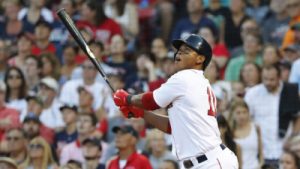
7. Anthony Rendon
This spot for Rendon might be a little unpopular, but he’s been around five years now and just had a real breakout last season at the age of 27. I do believe he is an excellent player, but he has been fragile dating back to his college days. Before last season, he’d only had one season as good as what Bregman did last year, or even what Devers did over a partial season. I just trust Bregman more to be consistently good year to year, and I think Devers upside is much higher. If Rendon can stay healthy though, he should be a good player for a while to come.
Over his first four seasons, Rendon batted .274 with just 13 home runs per season. Accounting for injury, that number jumps to 18 home runs per 162 games. Still, not overly impressive. He has hit 20 or more home runs in all three of his healthy seasons though, albeit barely. His .777 OPS over his first four seasons jumped all the way up to .937 last season. Some of it might have to do with the lively ball, but a lot of it probably has to do with him peaking at 27 years old and being healthy for a second consecutive season. He seems like someone who could settle in as a .300 hitter with 20 home runs per year.
8. Miguel Sano
If the allegations against Sano don’t pull him off the field, he should be one of the top home run hitters at the position for years. That is, if he remains at the position. Sano has bounced between third and right field some and hasn’t been impressive at either position. He has a .941 career fielding percentage at third and a negative dWAR. Unsurprisingly, he also grades out negatively in defensive runs saved. At 6’4″ 260, Sano looks like a long-term DH. However, he is at third base for now, so on this list he shall fall.
With his huge body, Sano has immense raw power. His contact rate holds him back some, as he has struck out over 170 times in consecutive years. He has struck out in nearly 36% of his Major League at-bats. That number has to come down for him to ever reach his full potential. He hits the ball hard though when he does hit it, and that hard contact rate will lead to high batting averages on balls in play. His BABIP last season was .375, and it was as high as .396 in his rookie season. If Sano can stay on the field, he could be a threat for 40 home runs. Currently, he is averaging 37 home runs per 162 games played.
9. Justin Turner
Turner isn’t higher on this list because he is 33 years old now. The guys above him should have many more years of production in them. Turner is an excellent hitter though, putting the ball in play often and causing damage when he does. His strike out rate was best amongst all third basemen last season. A year after hitting a career high 27 home runs, Turner batted .322 with 21 homers and a .945 OPS last year.
A mechanical change at the plate and hitting the ball in the air more often have not sacrificed Turner’s contact rate. Once a utility player, Turner broke out in that role in 2014, his first season with the Dodgers. Since gaining an expanded role, Turner has batted .295 and averaged 21 home runs per season over the last three. He should still be an excellent hitter for a few more years, and that to me warrants a spot in the top ten.
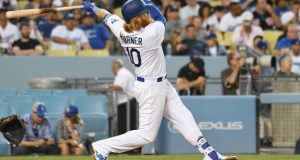
Los Angeles Dodgers third baseman Justin Turner follows through on a swing for a solo home run against the New York Mets during the third inning at Dodger Stadium. Mandatory Credit: Richard Mackson-USA TODAY Sports
10. Kyle Seager
Kyle Seager is as steady as they come. He doesn’t wow at the plate, but he puts up roughly the same numbers year in and year out. Seager has homered at least 25 times in four straight seasons, and 20 or more in six straight. His average bottomed out a bit at .249 last season, but he had batted between .260 and .278 in each of the four previous seasons. In all, he has batted .264 and averaged 25 home runs per season since becoming a regular in 2012. At 30 years old, it doesn’t look like he’s going to change much. He is who he is, and that’s a very solid third baseman.
Seager is just as good in the field, winning a Gold Glove in 2014. He has averaged more than 1.0 dWAR over the past four seasons His range factor has also been consistently above the league average every season. Seager should be a steady contributor at the hot corner for a while still to come.
Honorable Mentions:
Mike Moustakas, Jake Lamb, Travis Shaw, Adrian Beltre, Eugenio Suarez
Featured picture from Mile High Sports.
